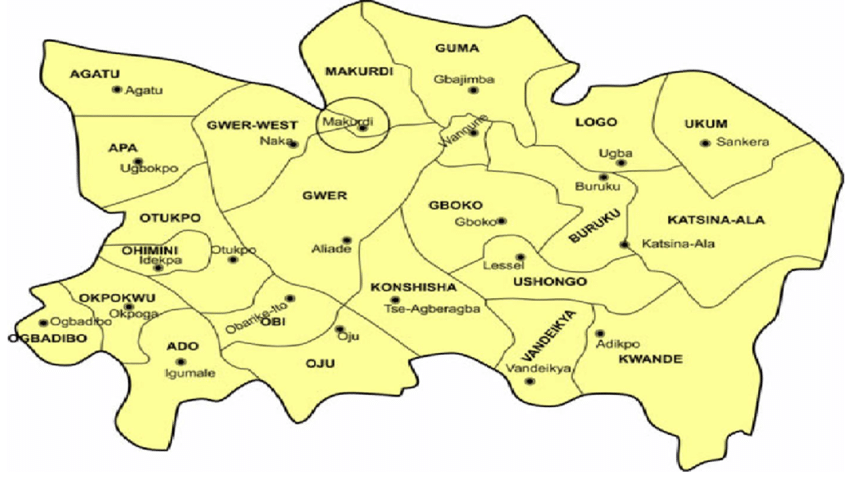In 2025, the estimated population of Benue State is around 6.62 million, reflecting an annual growth rate of 2.5% since 2022, when the population was recorded at 6.14 million.
Table of Contents:
Benue State is recognized as a major agricultural hub and one of the most densely populated states in Nigeria’s North Central region.
Despite gradual urbanization, much of Benue remains rural. However, cities such as Makurdi, Gboko, and Otukpo continue to expand at a faster pace than smaller towns and villages.
Historical Population Growth in Benue State
Since its creation in 1976, Benue State has experienced consistent population growth, driven by various socio-economic and environmental factors. The first official census in 1991 recorded a population of approximately 2,753,077.
By 2006, this figure had surged to 4,253,641, marking a significant 54.5% increase over 15 years. This growth was largely attributed to advancements in healthcare, improved education, and enhanced living conditions, leading to higher birth rates.
Fast forward to 2022, the state’s population was estimated at 6,141,300, representing a 44.4% increase from the 2006 census. A key contributor to this rise was the high fertility rate, combined with the state’s economic appeal as an agricultural powerhouse attracting migrants from nearby regions.
As of early 2025, projections indicate that Benue’s population will reach 6,619,000. The steady annual growth of 2.5% is primarily influenced by the continued high fertility rate, one of the highest in Nigeria.
Improved medical facilities have also played a role in reducing mortality rates, especially among children, further contributing to the population increase.
Population Distribution by Local Government Area
| No | Local Government Area | Population Projection (2025) |
|---|---|---|
| 1 | Ado | 286,476 |
| 2 | Agatu | 179,743 |
| 3 | Apa | 150,425 |
| 4 | Buruku | 320,562 |
| 5 | Gboko | 561,818 |
| 6 | Guma | 301,785 |
| 7 | Gwer East | 262,273 |
| 8 | Gwer West | 190,366 |
| 9 | Katsina-Ala | 351,086 |
| 10 | Konshisha | 352,682 |
| 11 | Kwande | 387,228 |
| 12 | Logo | 264,252 |
| 13 | Makurdi | 467,431 |
| 14 | Obi | 153,523 |
| 15 | Ogbadibo | 203,851 |
| 16 | Ohimini | 110,141 |
| 17 | Oju | 262,058 |
| 18 | Okpokwu | 272,936 |
| 19 | Oturkpo | 414,489 |
| 20 | Tarka | 123,429 |
| 21 | Ukum | 337,512 |
| 22 | Ushongo | 298,528 |
| 23 | Vandeikya | 365,932 |
Benue State Demographics in 2025
Age Distribution
| Age Group | Population Estimate | Percentage |
|---|---|---|
| 0–14 | 2,600,000 | 39.2% |
| 15–24 | 1,200,000 | 18.1% |
| 25–54 | 2,200,000 | 33.2% |
| 55+ | 619,000 | 9.4% |
Gender Breakdown
| Gender | Population Estimate | Percentage |
|---|---|---|
| Male | 3,290,000 | 49.7% |
| Female | 3,329,000 | 50.3% |
Ethnic Composition
Benue State is home to a variety of ethnic groups:
| Ethnic Group | Population Estimate | Percentage |
|---|---|---|
| Tiv | 4,300,000 | 65.0% |
| Idoma | 1,200,000 | 18.1% |
| Igede | 600,000 | 9.1% |
| Other | 519,000 | 7.8% |
Urban vs. Rural Population
| Area | Population | Percentage |
|---|---|---|
| Urban | 1,200,000 | 18.1% |
| Rural | 5,419,000 | 81.9% |

